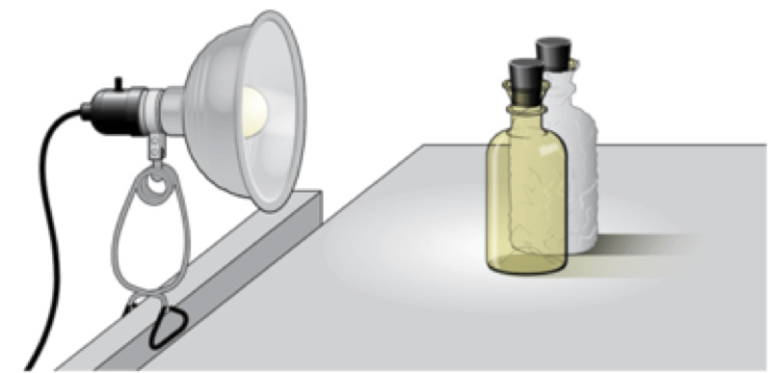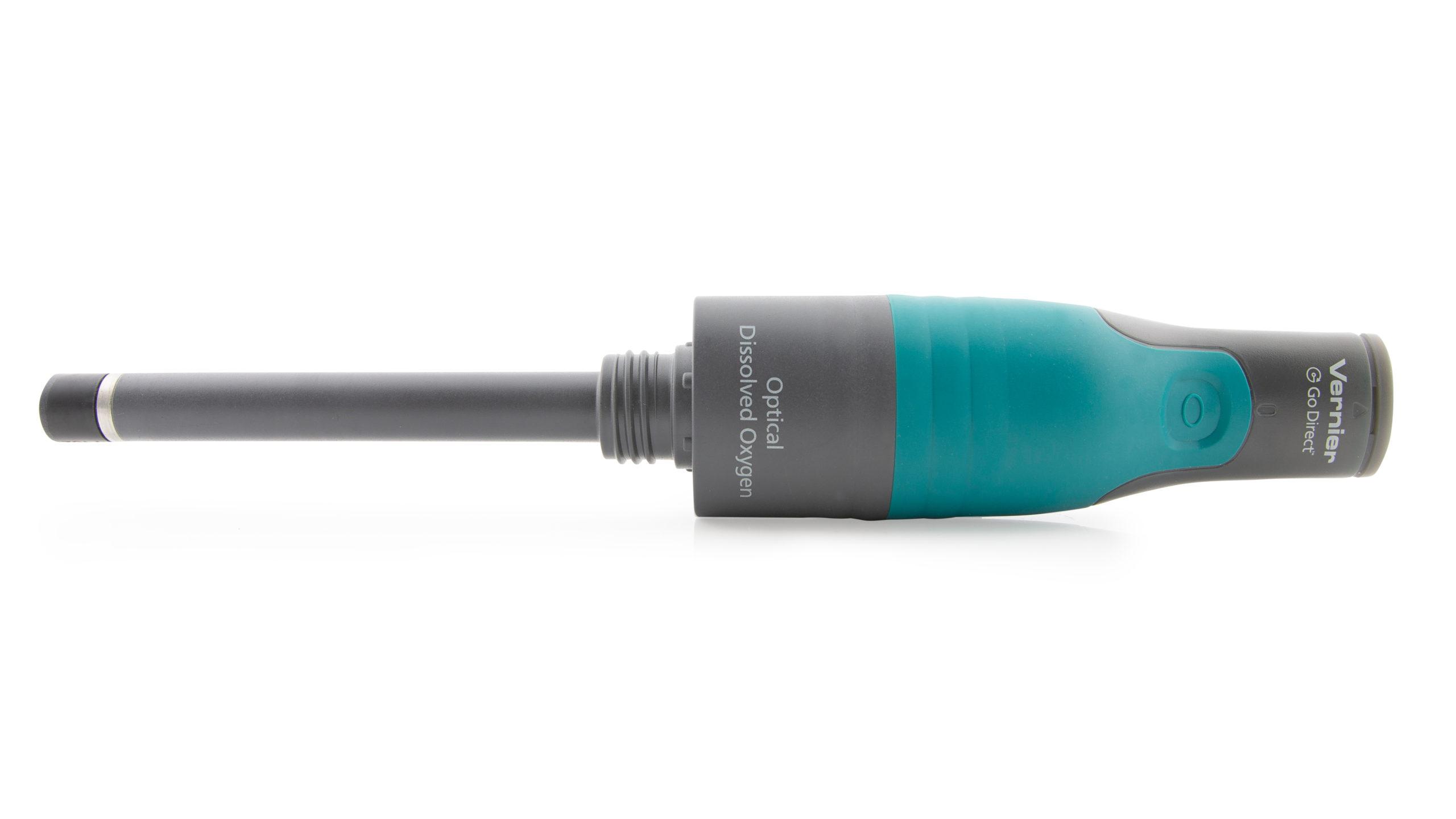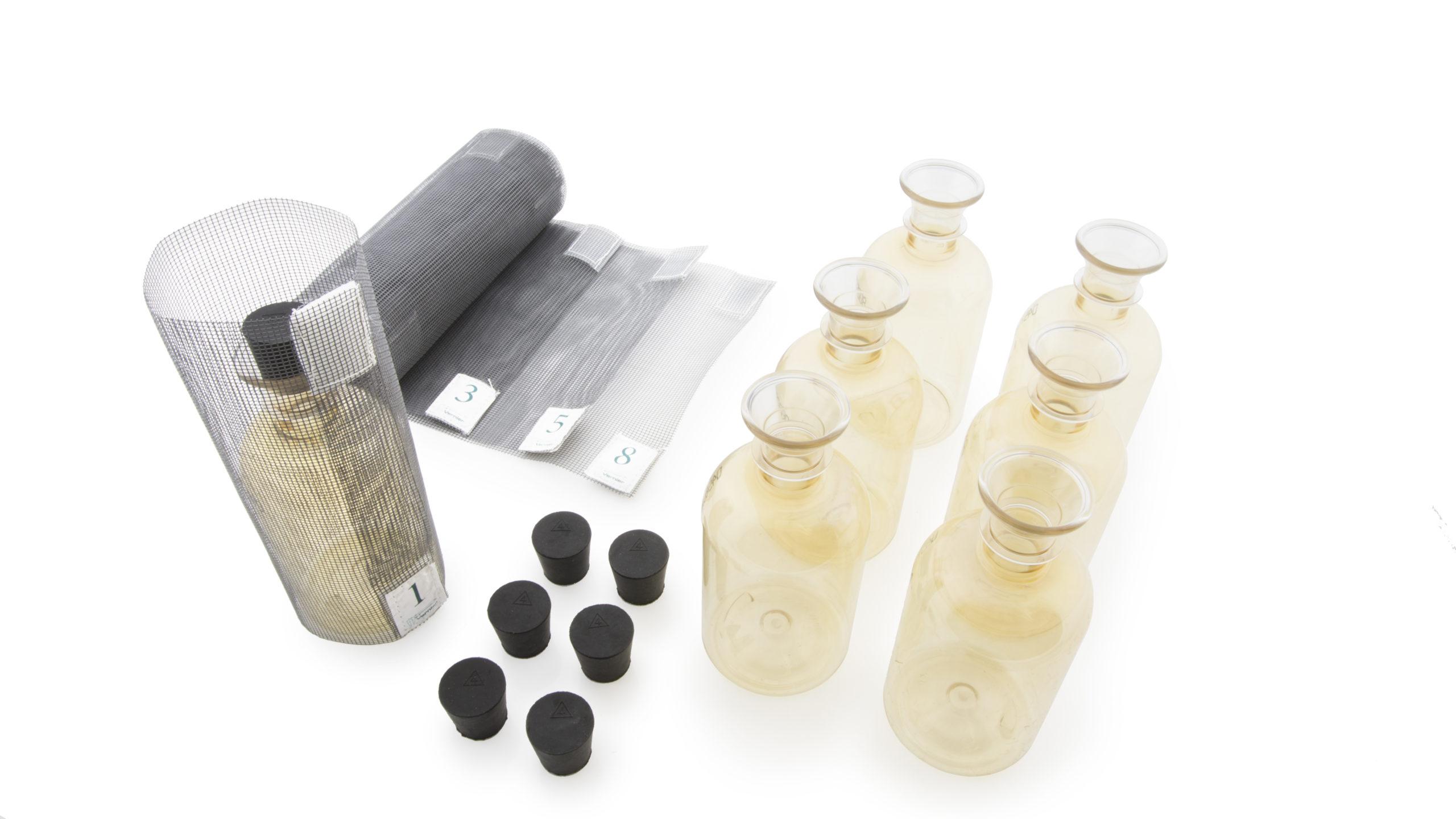
Introduction
One method of measuring the production of oxygen is the light and dark bottle method. In this method, a sample of water is placed into two bottles. One bottle is stored in the dark and the other in a lighted area. Only respiration can occur in the bottle stored in the dark. The decrease in dissolved oxygen (DO) in the dark bottle over time is a measure of the rate of respiration. Both photosynthesis and respiration can occur in the bottle exposed to light, however. The difference between the amount of oxygen produced through photosynthesis and that consumed through aerobic respiration is the net productivity. The difference in dissolved oxygen over time between the bottles stored in the light and in the dark is a measure of the total amount of oxygen produced by photosynthesis. The total amount of oxygen produced is called the gross productivity.
The measurement of the DO concentration of a body of water is often used to determine whether the biological activities requiring oxygen are occurring and is an important indicator of pollution.
Objectives
In this experiment, you will
- Measure the rate of respiration in an aquatic environment using a Dissolved Oxygen Probe.
- Determine the net and gross productivity in an aquatic environment.
Sensors and Equipment
This experiment features the following sensors and equipment. Additional equipment may be required.
Correlations
Teaching to an educational standard? This experiment supports the standards below.
- International Baccalaureate (IB) 2025/Biology
- D4.2.8—Eutrophication of aquatic and marine ecosystems due to leaching
Ready to Experiment?
Ask an Expert
Get answers to your questions about how to teach this experiment with our support team.
- Call toll-free: 888-837-6437
- Chat with Us
- Email support@vernier.com
Purchase the Lab Book
This experiment is #25 of Biology with Vernier. The experiment in the book includes student instructions as well as instructor information for set up, helpful hints, and sample graphs and data.




